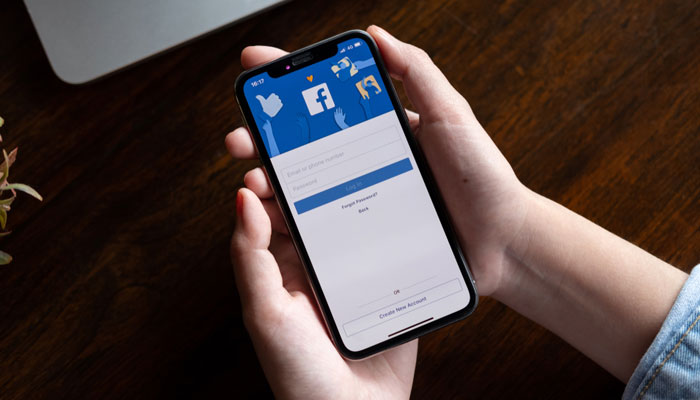This is the second of a two part series about How to Use Facebook for Lead Generation. You can read Part 1 here.
Now that you’ve chosen to pursue a Facebook advertising strategy, let’s lay the groundwork for a successful campaign. This may seem a little overwhelming at first. These moving parts will begin falling into place. Here’s my promise to you: This will get much easier as you gain a little experience and familiarize yourself with the process and begin seeing results from your own Facebook advertising campaigns.
Handle all of the Tech Steps
Secure your domain if you don’t already have one – If you already have a website for real estate marketing purposes, you may decide you want to use it for Facebook marketing purposes. However, if you decide you want to set up a special site for lead generation purposes, you’ll need to purchase a domain. You can use the domain registrar of your choice. A couple of common choices are godaddy.com and namecheap.com.
Subscribe to autoresponder software – While autoresponder software isn’t technically needed to advertise on Facebook, I recommend you subscribe to an autoresponder software service anyway. The reason is simple: an autoresponder service will get you out of the business of contacting prospects one by one and allow you to send to many people at once (for instance, to give valuable updates, to distribute a newsletter, etc.) Which autoresponder service is up to you. A couple of choices include aweber.com and getresponse.com. Autoresponder software will enable you to send automated marketing messages to prospective clients in the event that a lead doesn’t immediately become a client. This will let you to reach out to prospects over time and give you a fighting chance of winning business later on.

Subscribe to SMS notification service – As your Facebook ads run, you’ll ordinarily get email notifications letting you know you have a new lead. An SMS notification service like Clicksend (clicksend.com/us) will let you or a member of your team to get a text message every time someone responds to one of your Facebook ads. This will enable you to respond immediately – while your prospect is still hot and interested in your offer.
Get landing page software – Regardless of whether you have a background in web design or your comfort level is… shall we say… a little more basic, your best bet is to subscribe to commercially available landing page software like LeadPages (leadpages.net) or ClickFunnels (clickfunnels.com). When you run Facebook ads, you will run multiple ads for your ad campaigns. Landing page software will enable you to easily create multiple landing pages for each campaign as well as different versions of landing pages for split testing purposes. Landing page software is faster and easier, which will enable you to make advertising decisions based on real results. If you use WordPress for your website, you’re in luck. Both LeadPages and ClickFunnels have WordPress plugins, which makes it a breeze to tie your various landing page versions to your website without needing to know a thing about code.
Plan Your Campaign
Once you have secured your tech tools, you’re ready to plan your first Facebook campaign. Here is a short list of questions that’ll help with your planning process. Until you get the hang of Facebook advertising, you should answer these questions each time you run a new ad. It will help to ensure you get – and stay – on the right track before spending money on a single ad.
Am I targeting buyers or seeking listings? This answer may seem self-explanatory to you, but I can’t tell you how many of my consulting and coaching clients miss this step. Sometimes they don’t understand; in many cases, it is due to a heartfelt desire to attract buyers and sellers with the same ad. Your results will be disastrous if you make this mistake. You can run ads targeted to buyers and sellers – just not with the same ad.
What do my prospects want more than anything? At this point, try to put yourself in the shoes of your prospects (based on whether the leads will be buyer or seller/listing leads). What do they want? What questions do they have that must be answered in order for them to be so motivated by your ad that they will respond immediately(remember, your ad will interrupt what they are doing while they’re on Facebook so it needs to be solid). Is it knowing the current value of their home? Knowing how much John Smith, who lives down the block from them, sold their home for? Pro tip: A good way to answer these questions is to take a deep dive into your own recent clients. To get this info, you might need to call some of your recent clients and ask (keeping mind that motivations can and do fluctuate wildly between clients).
What are my prospects biggest fears? While it can be helpful to know what motivates your prospects, human beings are driven by fear: of missing out, of losing what we have, of suffering some pain (financial, personal, etc.). This could be a fear of something starting – or fear that it won’t stop. People often won’t spend a few bucks today to keep their health… yet there’s no amount of money they won’t invest if they believe it will restore what they have lost. Fear is a huge motivator in real estate. Find the fear and you might have a winner. Just don’t overdo the gloom and doom or your real estate prospects won’t respond.

What kind of prospects am I targeting? Are you targeting people of certain income ranges? You know your real estate business better than others. Maybe you work exclusively with high end/luxury real estate buyers or sellers. Or you are incredibly effective at working with First Time Home Buyers, people with bruised/damaged credit, etc. Drill down to the essence of the kinds of clients you really want to attract. What do you know about their likes, interests, desires? Answering these questions will make it easier to build your campaign that gives you the results you want/need because your ads will be specifically targeted to things that matter to your ideal prospects.
Get Creative: Developing Your Creatives for Your First Facebook Ad Campaign
At this point, you should have enough information to begin working on creatives for your Facebook ad. I’ve broken this process into just a few steps down to simplify this process for you. To be clear, you’ll be working on creatives for Facebook ads that will be seen in your prospects’ news feeds.
Copywriting – You’re not a professional real estate copywriter, but if you are able to combine the knowledge gained by answering the questions above, you should be able to create copy that can convert people seeing your ads into prospective clients. It might be helpful when writing copy to create all of your text using word processing software on your computer, so you can see it all in one place (and so you can easily copy/paste your copy into the places you’ll need it later). Here are the areas you’ll need to focus on with your copy:
- Facebook Headline(s) – Each Facebook ad should have a short, impactful headline that grabs the attention of your prospect. Create 3-5 headline variations for testing. By testing numerous headlines, you’ll be able to find a winning headline based on real world results. Over time, you will play with many headline versions to find the ones which are most effective. You have to start somewhere, so for now, begin with the 3-5 you’d like to test. Pro tip: Writing effective headlines takes time and practice. To give yourself the best chance for success, write many more headlines than you’ll need – as many as 25-50. Then pick the best ones for initial testing on live ads. Writing headlines can be addictive… I once wrote 500 headlines for a single campaign, the best of which was the lastone I wrote. Had I not written so many bad headlines, I never would have found the gem that worked incredibly well.
- Image copy – In part one, I showed you what a winning Facebook campaign looks like. If you follow the image-based model, you might want to place a small amount of text on your image. This step is not always necessary although it can be effective if it no more than a few words and grabs attention.
- Newsfeed copy – This is the red meat that will initially feed your prospects’ need to feed on your story. Make no mistake about it: story drives engagement with your Facebook ad and will be the only reason someone will start – and keep – reading. Tell a story that focuses on the wants, needs, desires (or fears) of the questions you answered above. The purpose of your newsfeed copy is to get prospects to click the link to your landing page. Include a call to action in the text to drive prospects to want to click your link and learn more. (If you follow the video model, you will need to write a script you’ll use when you create your video.)
- “Give Away” copy – People tend to express interest in working with a real estate agent when they have a need, they see an appropriate ad, and when they see the right offer. The offer you’ll make might be a resource, market report, or something else. Regardless of what you decide, you’ll need to write the copy for the resource you’ll be giving to prospects who give you their name, email address and phone number. This copy doesn’t have to be long, just long enough to give them what you are promising. Depending on the giveaway, you may not have to write much (if any) copy. This is especially true if you are giving away a market report or something similar. Just keep in mind that you might want/need to write something for what you’ll be giving away.
- Landing page copy – Once your prospects have clicked through to your landing page, they’ll want/need a reason to give you their name, email address and mobile phone number. Your landing page is designed to help you accomplish this goal. Write a different headline for your landing page, 3-5 bullet points that promise what your prospect will get in exchange for their contact info, as well as a call to action for the submit button. For instance, if you are promising a market report or other resource, the submit button could say something like, “Send Me My Custom Market Report”. This is just an example – play with this a little and come up with one of your own that will be effective.

Visual Creatives – Whether you’re following the image or video Facebook advertising strategy, you’ll need visual creatives for your newsfeed image as well as your landing page. In your newsfeed ad, images including people work very well although custom graphics can also be effective. The photo or image you use is up to you (although you should test several versions for effectiveness). Pro tip: If you use an image with a person in it, be careful about where the eyes of the subject are looking.
People seeing your ads will take visual cues from anyone in the ad. If you want your prospects to read the text below your image, a person looking down towards the copy below (or a read more button) can provide subconscious cues to those seeing your ad to look below where they will see your text. If you need custom creatives, and you don’t have Photoshop skills, you might need to hire someone to create them for you. If a member of your team isn’t skilled in Photoshop, you can hire low cost providers at Fiverr.com or upwork.com. (You’ll find that the quality of the images you get from these providers is often closely tied to how much you pay. Cheaper isn’t always better.)
Video – If you follow the video Facebook model I outlined in part one, you’ll need to incorporate the script you will have written into your recorded video. You have two main choices when recording your video. You can record a video with your phone or hire a pro. For Facebook ads, you really don’t need to go all out with a professional recording. In some cases, doing so can actually hurt conversion, especially if your video looks too click and professional. Prospects value authenticity. What can be more authentic than you talking directly and honestly about how you can help your prospect meet his or her needs?
Create Your Facebook Ad Account
Now that you’ve planned your Facebook ad campaign, you know who your target audience is, you’ve created your landing page, written your copy and everything else, you’re ready to create your Facebook ad account. To get started, look at the main Facebook navigation button and click the little arrow to the right of the question mark.

A new page will open up. When it does, click the blue button that reads, “Create an ad”.

You will then be taken to a new page. Look on the left hand column and find “Ad account” and click “Create New”. Fill in the requested information. That’s it! You’ve created your ad account.
Create Your Facebook Ad
Now that you’ve created your ad account, you’re nearly ready to begin building your first ad campaign on the Facebook ad platform. First, go hereto create your Facebook pixel. (This is a short piece of computer code that will let Facebook track your ads and for you to create custom audiences later on based on what prospects do. Don’t miss this step.
Once you have done this, open your Facebook ads manager, then you can begin creating your campaign. Here’s what it should look like:

As you can see from the blue highlighting, you are creating a new campaign. (You will have the option to use an existing campaign once you have one or more active campaigns.) Keep in mind, a Facebook ad campaign consists of a group of one or more ad sets with the same goal. For instance, your initial campaign might be to target listing prospects who will request a market report from you. Within this single campaign, you might have multiple ads, each targeted to reach prospects within the campaign.
The first choice you have to make is choosing a marketing objective. I typically select conversions under the far right column under Conversion. Depending on your goals, you might choose a different goal at some point, but this will work for now.
As soon as you select “conversions”, another section will open up below:

In the box next to “Campaign Name”, give your campaign a name that will make sense to you later when you come back to it.
Toggle on the buttons to Create Split Test, then click continue.
You will then be prompted for the URL you’d like to track. While you could enter the URL of your landing page, this will give you inaccurate information. The information that matters is how many people give their name, email address, and phone number. What I recommend instead is that you create a thank you page using your landing page software – a page people will be taken after giving you their information. Enter this URL in the area asking for the URL you want to track.
You will then be prompted to create the audience for your ads. In this section, you will have the opportunity to create a campaign based on existing/former clients, website visitors, people who engage with your content on Facebook, etc.
You can also create an audience for your ads based on location/zip code(s), age, gender, demographic, interest and behavior-based information (such as page likes). As you build out your target audience, you will see that the potential reach for your ads will grow or shrink. Having too broad an audience for your ads will reduce their effectiveness. For instance, if you select anyone 18 and over living in the United States, your ads won’t be relevant to the overwhelming majority of people, and performance will suffer.
Be careful when making selections. The more relevant your choices are to the kinds of people you are targeting with your ad sets, the better your response will be.
I recommend you select ad placement for Facebook only, eliminating Instagram and other possibilities which are don’t on Facebook’s direct ad platform. Further, I also recommend only highlighting newsfeed, instream videos and suggested videos (if you have a video ad).
You will then be prompted to choose your daily or campaign budget amount (which includes all ads created within your campaign).
Facebook prefers that you pay for impressions and not clicks. This makes it more expensive for you to advertise. Select clicks! You may be forced to use impressions by default until you have spent a minimum of $10 in a campaign. If this is the case, edit this part once you have crossed the $10 threshold.
Finally, you will have to make choices about your ad budget, duration, etc. I recommend setting a daily budget while your campaign is running of no more than $5-$10 daily or a cumulative $50 over a 4-5 day period while you are testing ads and finding a set that converts.
Once you have worked out the details of your campaign, now it is time to create a few competing ad sets for your campaign. The first step is to create your initial ad. Fill in the headline you’ll use, as well as adding your image (or video URL), the copy that will appear in your ad, and select the call to action button.
After taking this step, duplicate the ad and change the headline or whatever detail you wish to split test. I don’t recommend more than 3 or 4 simultaneous ads at once – at first. Once you get the hang of things, you can add more.
Once you have created your competing ad versions, you are ready for them to be reviewed by Facebook. At this point, Facebook will accept or reject your ad. Common reasons for ad rejection include making unprovable promises, including images that are sexual or misleading in nature, etc. It is common for an ad to be initially rejected by Facebook. If this happens, simply respond to the message asking what specifically you did wrong and how you can fix it. If you remain calm, polite, and professional, Facebook personnel are usually pretty good about helping you. Remember, Facebook doesn’t generate revenue by rejecting ads!

Review Your Results and Shift on the Fly
After you ad has been running for a few days, you’ll have some data to review. If you’ve done your job right, you will begin getting text notifications from people interested in your offer. While this is good, the best way to know how your campaign is doing is reviewing your ad data. How much is each click costing you? Review your data, kill ads that are either not generating clicks or are giving you clicks at a much higher cost than others.
A Few Parting Thoughts
Advertising on Facebook can be a little challenging, especially at first. You will find that the process of creating winning campaigns is built on equal parts trial and error, split testing, and your offer.
It will take a little time to perfect your Facebook advertising strategy. Pay attention to the small details, plan well, and be prepared to shift on the fly.
Facebook advertising is still worth it. Thousands and thousands of real estate professionals are successfully managing their own advertising campaigns – and are reaping the rewards of more closings. Now you can, too!
 Ken Speegle is Realty ToolKit’s resident real estate industry expert. Every week he writes insightful, in-depth articles about topics related to real estate marketing, each designed to help make you a better, more profitable real estate professional. Ken is the founder of therealestatewriter.com and has been a real estate copywriter since 1994.
Ken Speegle is Realty ToolKit’s resident real estate industry expert. Every week he writes insightful, in-depth articles about topics related to real estate marketing, each designed to help make you a better, more profitable real estate professional. Ken is the founder of therealestatewriter.com and has been a real estate copywriter since 1994.











